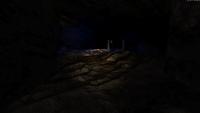Trooper Dan, on 05 October 2019 - 02:52 PM, said:
Vanilla Duke 3D doesn't provide very good cases for this? Maybe in a map with a large viewing range that had some of the higher-res textures on distant objects.
Exactly right, which is partially stunned that some people say the effect is "too drastic" on the legacy textures, there are some places I turn it on and off and I don't see much of a delta at all, but the areas that I have seen so far it seems to work, I'll try with the HRP assets and see what the gains are.

 Help
Help
 Duke4.net
Duke4.net DNF #1
DNF #1 Duke 3D #1
Duke 3D #1









